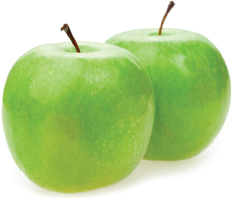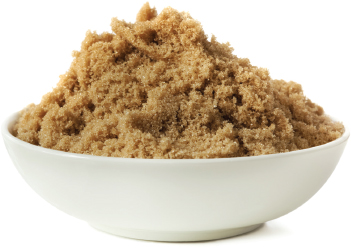
We are all familiar with the numerous advertisements on television for antacids to relieve indigestion, heartburn, and gas—all conditions related to stomach juices coming up the throat. There are lots of ads for these medications, because there are lots of people using them. An article in USA Today in 2011 reported, “A recent study found that 1 in 10 people buys an antacid at least once a month. Sales of antacids nationwide jumped 7% in 2010, pulling in $1.2 billion, according to Drug Store News, a publication on the pharmaceutical industry.”
That’s right: Antacids are a billion-dollar industry here in the United States, and growing. With increased research on the subject, it’s believed that there’s a 50/50 chance that anyone over the age of 40 has some form of acid reflux. The incidence is spreading to younger people, too. And it’s afflicting those who are in good shape as well as those who aren’t.
The burning and uncomfortable feelings of indigestion and heartburn are only the tip of the iceberg. Reflux can cause many other symptoms, even without the feeling of indigestion.
Do you experience any of the following symptoms regularly?
![]() Some form of heartburn (chest pain after eating)
Some form of heartburn (chest pain after eating)
![]() Trouble swallowing
Trouble swallowing
![]() A chronic cough
A chronic cough
![]() Shortness of breath
Shortness of breath
![]() Hoarseness in the morning
Hoarseness in the morning
![]() Post-nasal drip
Post-nasal drip
Dr. Jamie Koufman, author of Dropping Acid: The Reflux Diet Cookbook & Cure, coined the term “silent reflux” to incorporate many of the symptoms that are commonly associated with asthmas and allergies but are often caused by reflux. It turns out that acid alone isn’t the primary culprit. Digestive acid works along with the digestive enzyme pepsin, which is one of many digestive enzymes but which targets the breakdown of proteins. Pepsin can’t work without acid, though: When acid is present, pepsin goes to work breaking things down. The thing is, it doesn’t matter to pepsin whether its source of acid is coming up from the stomach or down from something being ingested. If it’s in the tissues of your throat, voice box, or esophagus, it can be reactivated with any source of acid.
Ultimately, then, if dietary acids are minimized, pepsins have less to work with, and tissue can heal, relieving reflux symptoms. Diet can play a large part in this.
If you want to feel better and experience less reflux, you will need to become familiar with what foods and beverages are okay to consume on a regular basis—and which are not. Remember, too, that everyone is different. If you are doing your best to follow the guidelines in this cookbook and other low-acid resources and you aren’t feeling any improvement, there may be something else going on. Work with a trusted medical professional for best results.
Let’s cut to the chase: The following list is of foods that should be avoided. They are certifiably inappropriate foods for sufferers of reflux. Why? Because they’re loaded with acid.
Key offenders:
![]() Alcoholic beverages (all beer, wine, and spirits)
Alcoholic beverages (all beer, wine, and spirits)
![]() Coffee, tea, and other caffeinated (or decaffeinated) beverages; if you can’t live without coffee, limit it to no more than 1 cup a day
Coffee, tea, and other caffeinated (or decaffeinated) beverages; if you can’t live without coffee, limit it to no more than 1 cup a day
![]() All carbonated beverages
All carbonated beverages
![]() Citrus fruits and juices
Citrus fruits and juices
![]() Tomatoes and tomato sauces
Tomatoes and tomato sauces
![]() Raw onions and garlic
Raw onions and garlic
![]() Vinegar
Vinegar
![]() Chocolate (the higher the fat content, the worse it is for you; for example, a milk chocolate will exacerbate reflux more than a lower-fat dark chocolate)
Chocolate (the higher the fat content, the worse it is for you; for example, a milk chocolate will exacerbate reflux more than a lower-fat dark chocolate)
![]() Fatty meats, including beef, pork sausages, ribs, etc.
Fatty meats, including beef, pork sausages, ribs, etc.
![]() Anything deep-fried
Anything deep-fried
![]() Hot sauces and hot peppers
Hot sauces and hot peppers

![]() Nuts that are high in fat, such as peanuts, cashews, and walnuts
Nuts that are high in fat, such as peanuts, cashews, and walnuts
![]() Peppermint and spearmint Offenders that can be used in moderation:
Peppermint and spearmint Offenders that can be used in moderation:
![]() Butter, margarine, shortening, or lard. These high-fat flavorings are the backbones of so many cooked foods that it is nearly impossible to sustain a diet without them. The key is to use them sparingly as flavorings or for cooking and not to overdo their use.
Butter, margarine, shortening, or lard. These high-fat flavorings are the backbones of so many cooked foods that it is nearly impossible to sustain a diet without them. The key is to use them sparingly as flavorings or for cooking and not to overdo their use.
![]() High-fat dairy products such as cheese and creams. Try to avoid those with the highest fat content, like whole milk heavy cream, or a cheese like Brie. Finding low- or non-fat substitutes can bring a lot of variety to your meals. Fortunately, there are a lot of choices for these in most supermarkets.
High-fat dairy products such as cheese and creams. Try to avoid those with the highest fat content, like whole milk heavy cream, or a cheese like Brie. Finding low- or non-fat substitutes can bring a lot of variety to your meals. Fortunately, there are a lot of choices for these in most supermarkets.

![]() Eggs. The yolk is the part with the high fat content. Reflux sufferers should abstain from eating whole egg-laden dishes, but one or two on occasion, or as part of a healthy recipe, is acceptable.
Eggs. The yolk is the part with the high fat content. Reflux sufferers should abstain from eating whole egg-laden dishes, but one or two on occasion, or as part of a healthy recipe, is acceptable.
When the concept of “diet” comes to mind, fruits and vegetables are typically the foods that can be eaten almost limitlessly. Not for sufferers of reflux. Even among a common fruit like the apple, pH (acid) levels vary, making some varieties better than others. It gets confusing. Here’s a partial list to help with basic choices. The recipes in the book indicate which varieties are best to select.
![]() Apples. Those with the lowest pH are Red Delicious, Fuji, and Gala. Granny Smith and Macintosh apples are varieties with higher acid and should be avoided.
Apples. Those with the lowest pH are Red Delicious, Fuji, and Gala. Granny Smith and Macintosh apples are varieties with higher acid and should be avoided.

![]() Onions. The white onion is the kind suitable for those who need a low-acid diet. Stay away from yellow or Spanish onions.
Onions. The white onion is the kind suitable for those who need a low-acid diet. Stay away from yellow or Spanish onions.
![]() Potatoes. Stick with Idaho and Yukon Gold and you are fine!
Potatoes. Stick with Idaho and Yukon Gold and you are fine!
![]() Mushrooms. The best are Portobello and—fortunately—domestic mushrooms. Use others sparingly.
Mushrooms. The best are Portobello and—fortunately—domestic mushrooms. Use others sparingly.
![]() Peppers. The red, orange, and yellow peppers are lowest in pH, with green peppers and Italian peppers being slightly higher. Stick with the red, orange, and yellow peppers.
Peppers. The red, orange, and yellow peppers are lowest in pH, with green peppers and Italian peppers being slightly higher. Stick with the red, orange, and yellow peppers.
The good news is that there are lots of foods that can be eaten in abundance and which provide great satisfaction. Top of the list is grain products: breads, pasta, polenta, rice, couscous, bulgur, quinoa—there are lots of great grains you can eat. As with any diet, the higher the whole grain content, the better. And while you can’t slather your breads with high-fat spreads like butter or regular mayonnaise, you can use butter sparingly, and there are many sugar-free jams and more nutritious nut butters (such as almond butter) that are healthy and satisfying.
The foods that are best for those who suffer from reflux are:
![]() Root vegetables and greens—including cauliflower, broccoli, asparagus, beans, kale, chard, sweet potatoes, and more. Although raw vegetables can sometimes aggravate reflux, when prepared in a slow cooker that breaks down the cell walls, they become ideal foods.
Root vegetables and greens—including cauliflower, broccoli, asparagus, beans, kale, chard, sweet potatoes, and more. Although raw vegetables can sometimes aggravate reflux, when prepared in a slow cooker that breaks down the cell walls, they become ideal foods.
![]() Chicken and turkey are great low-fat, lean sources of protein—so long as the skin is removed and you do not eat them fried or sautéed in lots of butter or smothered in a rich sauce.
Chicken and turkey are great low-fat, lean sources of protein—so long as the skin is removed and you do not eat them fried or sautéed in lots of butter or smothered in a rich sauce.
![]() Fish and seafood—while your selection in this category is large, you want to look for wild fish and not farm-raised fish, and you want to minimize any processed fish or fish that’s been prepared with other fats, like coconut shrimp, for example.
Fish and seafood—while your selection in this category is large, you want to look for wild fish and not farm-raised fish, and you want to minimize any processed fish or fish that’s been prepared with other fats, like coconut shrimp, for example.

![]() Grains—Although whole grains are best, reflux isn’t aggravated by any grains, so you can eat everything from multi-grain breads to regular bulgur and white rice. There are lots of choices in this category.
Grains—Although whole grains are best, reflux isn’t aggravated by any grains, so you can eat everything from multi-grain breads to regular bulgur and white rice. There are lots of choices in this category.
![]() Melon
Melon
![]() Fennel
Fennel
![]() Bananas
Bananas

It may seem like sticking to a low-acid diet means giving up the foods that make dishes flavorful and fulfilling. Instead of thinking about what you have to lose, however, consider all the flavors and ingredients you can use to your heart’s content. A new world of food may be awaiting you. For example, here are some yummy things you can indulge in:
![]() Maple syrup and brown sugar
Maple syrup and brown sugar
![]() Parmesan and cheddar cheeses
Parmesan and cheddar cheeses
![]() 2% milk and low- or non-fat creams (like half-and-half)
2% milk and low- or non-fat creams (like half-and-half)
![]() Non-fat yogurt
Non-fat yogurt
![]() Dijon mustard
Dijon mustard
![]() Vinaigrette—yes, it’s true!
Vinaigrette—yes, it’s true!
![]() Low-sodium soy sauce
Low-sodium soy sauce
![]() Fresh ginger
Fresh ginger
![]() The zest of lemons and oranges (not the juice or fruit itself)
The zest of lemons and oranges (not the juice or fruit itself)
You’ll find that in the recipes in this book we have tried to incorporate as many fun flavorings as possible. Once you become familiar with ingredients you’ll need frequently and your pantry is stocked with them, it will become easier and easier to create meals that provide the satisfaction you crave.
Let’s get cooking!
